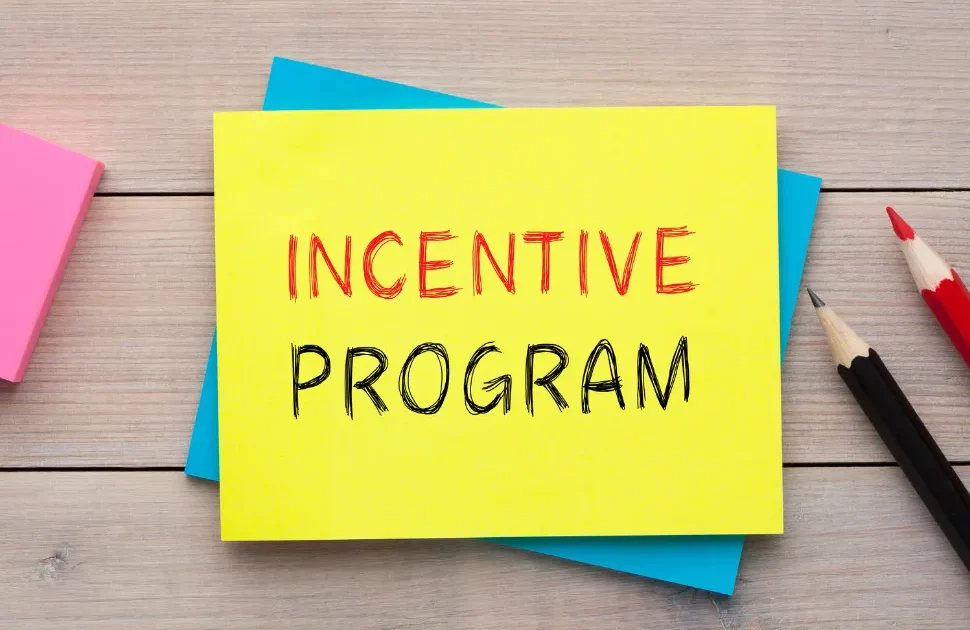Organizations across the globe use incentive programs to entice employees to perform better than they normally give during normal work. Incentive programs have been used with varying degrees of success. The success rate of incentive programs largely depends on the design and purpose of such incentive programs.
There is enough scientific evidence to show the efficacy of incentive programs. For instance, a study conducted within the manufacturing sector in Sri Lanka showed that incentive programs markedly improved job performance.
Incentive programs started to gain prominence in the 19th and 20th centuries. This period saw the formalization of work incentives to improve productivity and efficiency within the work environment. The idea of using incentives to motivate employees gained traction with the development of executive incentive schemes by companies like Du Pont and General Motors in the 1920s, linking executive compensation to company performance. Since then, the application of incentive programs has evolved and expanded across various industries, becoming a key strategy for enhancing employee and organization performance.
A 2021 survey indicated that 93% of privately held companies had short-term incentive (STI) programs, which slightly dropped from 99% in 2019. The use of goal-based annual incentive plans decreased while the use of spot awards and discretionary bonus plans rose. The use incentive programs is not confinded to commercial entitis only as nonprofit organizations have also seen an increase in short-term incentive prevalence, reaching 82% in 2021, the highest level reported in one survey.
With climate change and environmental issues gaining prominence at a corporate level, there has been an upsurge in using incentive programs to achieve broader societal goals. Using incentive programs linked to Environmental, Social, and Governance (ESG) metrics is becoming more common among major corporations, with 73% of S&P 500 companies in 2023 incorporating ESG-linked incentives. This trend indicates a growing emphasis on sustainable and socially responsible business practices as part of incentive program criteria.
Incentive programs and employee performance
The debate has been raging on whether incentive programs lead to better employee performance. The good news is that there has been enough scientific research on incentive programs and their impact on employee performance. I will share some of the notable studies below with you.
One meta-analysis study looked at four decades of research evidence and found that incentives predict the quality of work performance. Another meta-analysis showed that the overall impact of incentive programs across various work settings resulted in a 22% gain in performance. The same study showed that team-directed incentives were more effective than individual-directed incentives. This finding significantly impacts how organizations can design effective incentive programs, given that it is better to invest in team-oriented than individual-focused incentive programs for better results.
Further studies have shown that individual and team-based financial incentive programs positively affect performance. Again, as in previous research, team-based incentives fared better than individual-focused incentives. The way rewards were distributed mattered. In teams, fair distribution (giving everyone a reward based on their contribution) led to better performance than simply giving everyone the same amount. These findings were stronger in real-world situations (field studies) than in controlled settings (laboratory studies) and for more complex tasks. Interestingly, the number of people on the team and the gender mix seemed to influence how well team rewards worked, but more research is needed to understand exactly how.
What Are The 4 Examples Of Incentives?
-
Monetary Incentives: employees are given money as a reward for achieving pre-agreed performance targets. They often come as direct financial incentives such as cash bonuses, pay raises, or profit-sharing. Monetary incentives are agreed in advance and guaranteed once employees achieve performance targets. Companies often pay these weekly, monthly, quarterly, and some yearly.
-
Recognition Incentives Under this scheme, no money is involved; employees are offered recognition for achieving performance milestones. Employees receive public recognition, certificates, or some such award.
-
Non-Financial Material Incentives: Non-financial incentives can take various formats, including time off, thank-you notes, or semi-material incentives like vouchers and gifts. Research shows that incentives under this category work when tailored to individual employee needs.
-
Developmental Incentives: Under this scheme, employees who achieve the agreed targets will get development opportunities. These are often agreed upon upfront at the time of setting performance targets.
Long-term versus short-term incentives Programs
One of the topical issues around employee incentive programs is whether to focus on short-term or long-term when awarding incentives. In the long-term incentive program structure, incentives are given after achieving long-term goals that require a longer time to achieve, often over a year.
Under the short-term incentive program structure, bonuses or sales commissions are paid out within a financial year and are designed to encourage employees to meet immediate performance targets. Other researchers have argued that short-term incentives lead employees to take shortcuts that can harm the organization. For example, employees under the scheme might prioritize short-term gains over long-term value creation.
Long-term incentive schemes are found mainly at the executive level. Such schemes include options or performance shares. The justification for such schemes is always the need to link the fate of employees to those of the shareholders by incentivizing sustained performance over a longer period, sometimes several years. Due to how companies design long-term incentives, the focus has been on encouraging employees to concentrate on the company’s long-term success. Whether long-term incentives are effective or not remains debatable.
Group versus Individual Incentives Programs
Group, often called team incentives, rewards employees based on their achieving group goals and targets. The underlying reason behind the design of group incentives is to promote teamwork as employees collaborate to achieve company goals. Group incentives are effective when employees need to collaborate to achieve performance targets. For example, a study by Park and Kim found that group incentives can improve individual employees’ attitudes. Other studies show that group incentives work through peer monitoring and social pressure to perform, improving team outcomes.
Under individual incentive programs or schemes, the employee is rewarded for achieving pre-agreed performance targets. Employers under such schemes focus on work where personal effort is enough to achieve important organizational goals. Individual incentive programs have been criticized for not promoting.
There has been debate on which scheme is effective between group versus individual incentives. A study by Bortolotti, Devetag, and Ortmann comparing group-incentive and individual-incentive treatments found that dynamics of individual performance levels differed under the two different incentive schemes, suggesting that the type of incentive can influence how employees perform.
Best Practices for Implementing Incentive Programs
It is evident from the success rate of incentive programs that designing employee incentive schemes is a complex process. Employers need to consider various elements to ensure the desired outcomes. Based on a synthesis of scientific evidence from meta-analyses, field experiments, case studies, and other credible research, here are hints that organizations can adopt to make their incentive programs work:
- This meta-analysis offers practical insights into the design of effective incentive programs. A major lesson from this study is that team-based financial incentives lead to better performance than individual-focused rewards. The same research paper shows that fairly distributing team rewards based on individual contributions leads to superior outcomes compared to equal distribution among all members. The research findings suggest that focusing on team-based goals and equitable distribution of incentive payout is key to designing incentive programs.
- Goal-setting theory research indicates that specific, challenging goals lead to higher performance than vague or easy goals.
- One research shows that employees are motivated by tangible rewards and a positive workplace experience. To design effective incentive programs, managers should prioritize creating a friendly and supportive work environment that positively affects employee motivation. The study notes that managers must seek to understand what drives specific workforce segments before designing an incentive scheme.
- Avoiding performance measurement traps where incentives may lead to undesired behaviors or outcomes is important. Once a company starts running an incentive program, it encourages certain behavior patterns, and it must be careful to promote the right and desired behaviors that align with the company’s goals.
- When companies design the payout formula, they should consider pay-to-performance sensitivity, which refers to how closely the incentive payout is linked to performance metrics. A well-designed payout formula will translate performance into appropriate rewards, aligning employee actions with company objectives.
- In designing payout formulas, care should be taken to avoid the dilution of incentives. This scenario occurs when payout formulas include too many criteria or when the connection between performance and payout is not straightforward. It pays companies to use simple payout formulas, which are easy to understand for the benefit of employees.
- Communication is key in the design of incentive programs. Communicate the payout formula clearly to staff. This transparency helps employees understand how their performance will impact their incentives.
Conclusion
Well-designed incentive programs significantly enhance employee performance, leading to better organizational performance. Tailor these programs to individual or group performance targets depending on your context. Remember, incentives work best in a positive work environment. Considering the above design factors may help your organization design an effective incentive program.











